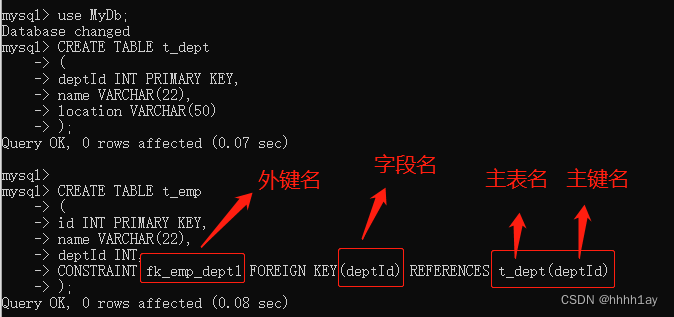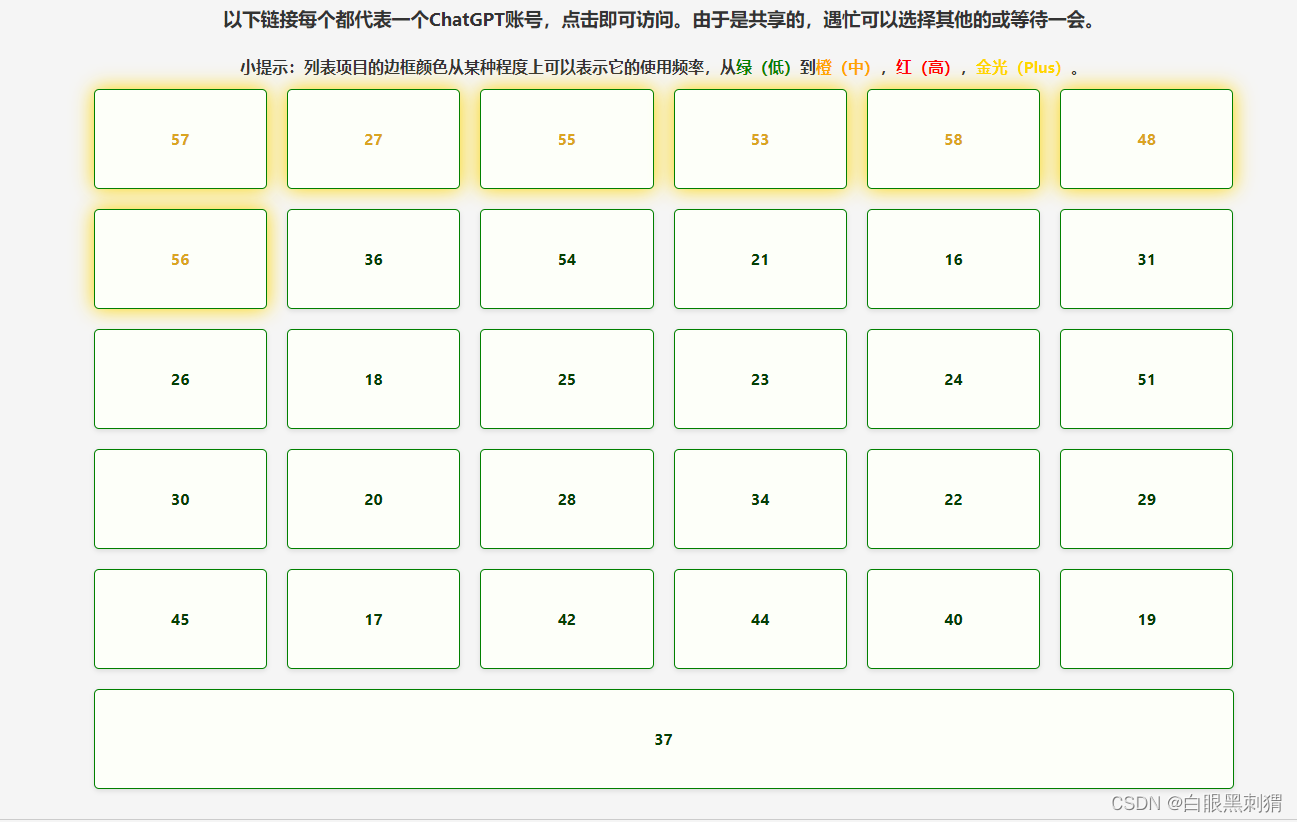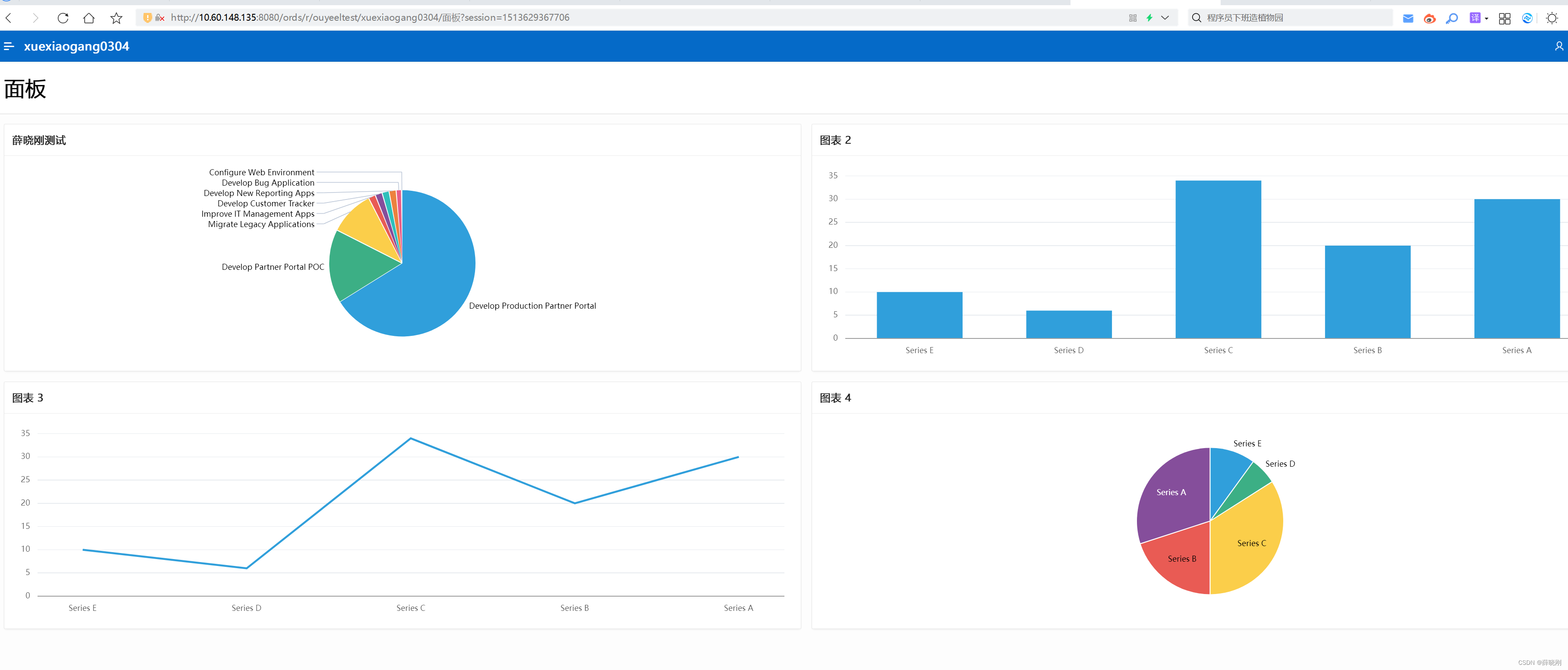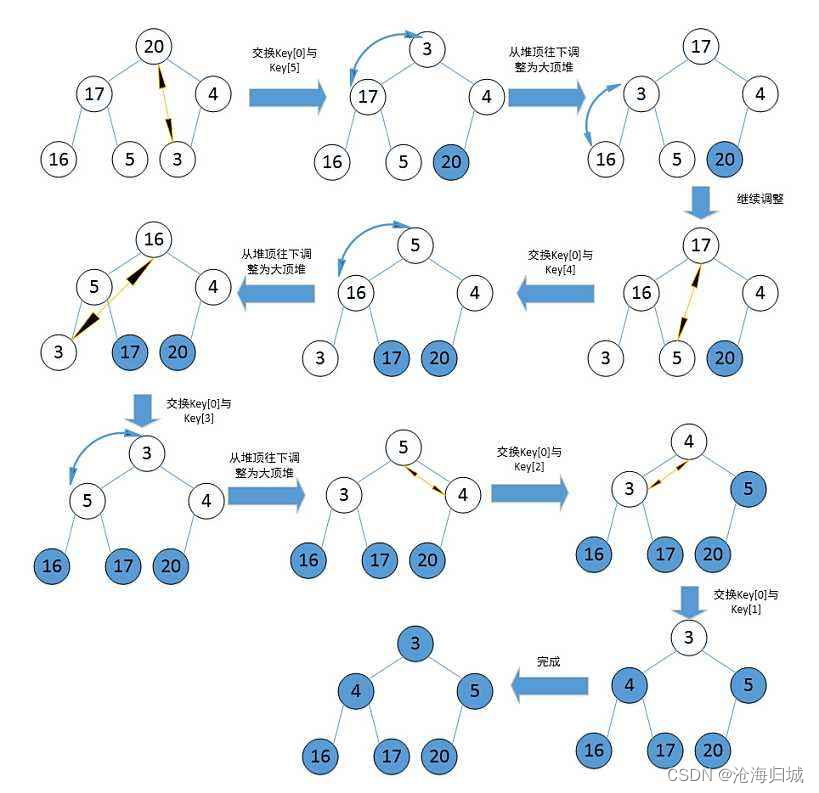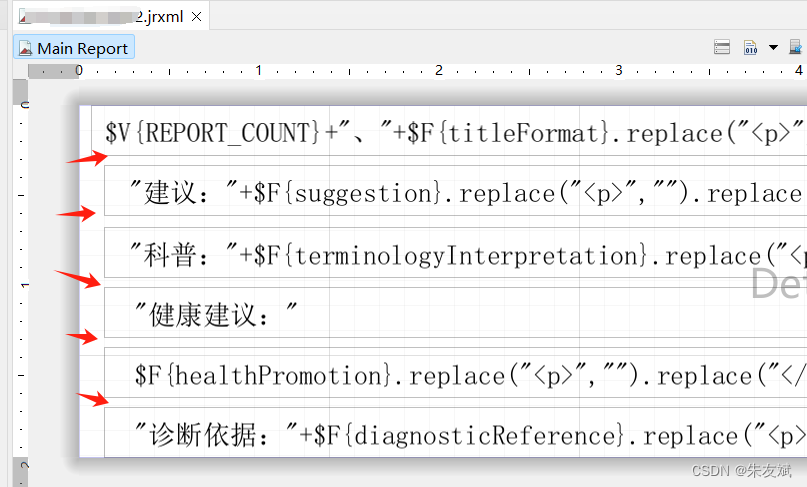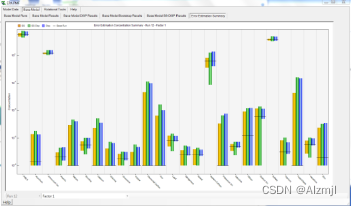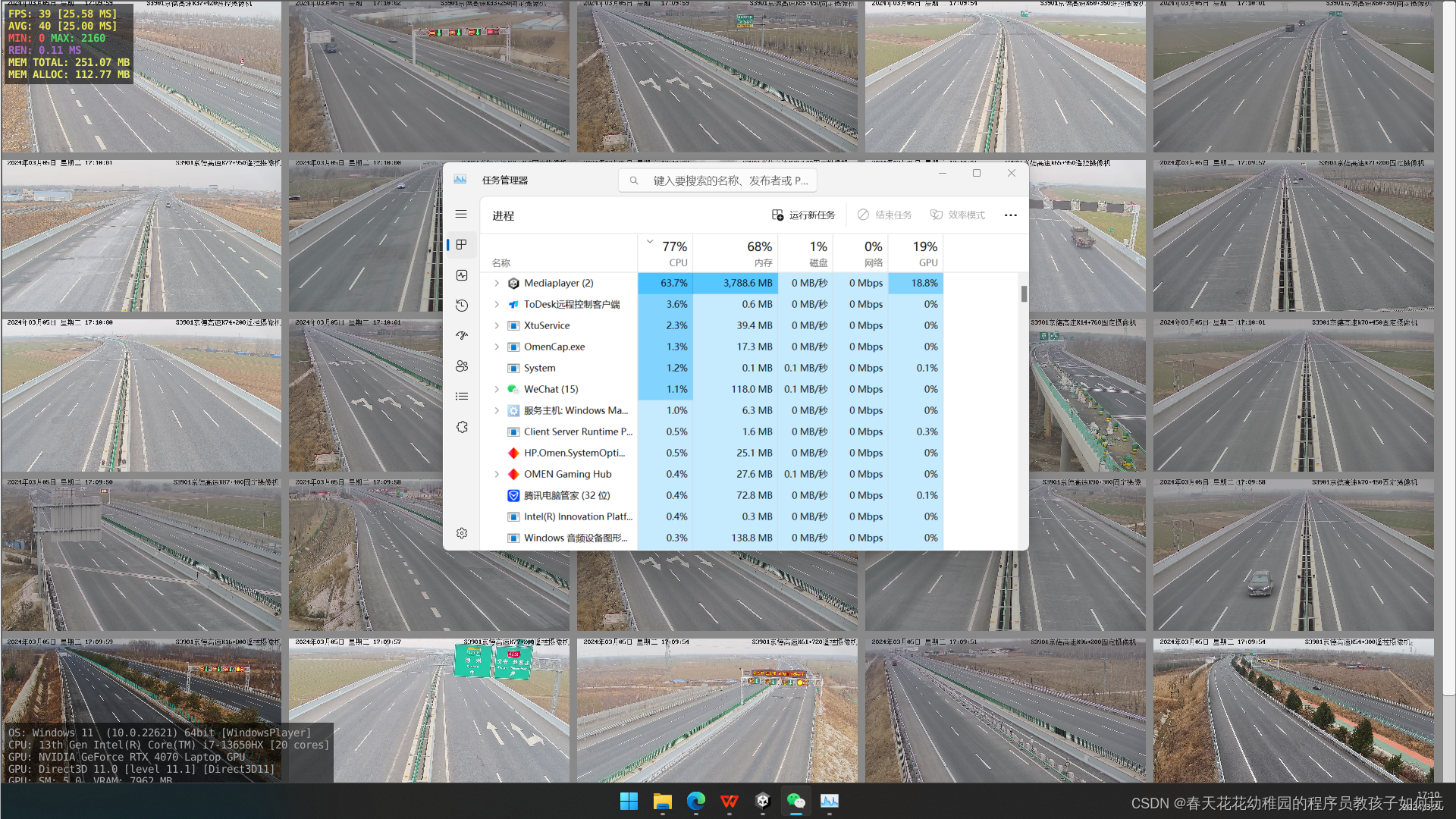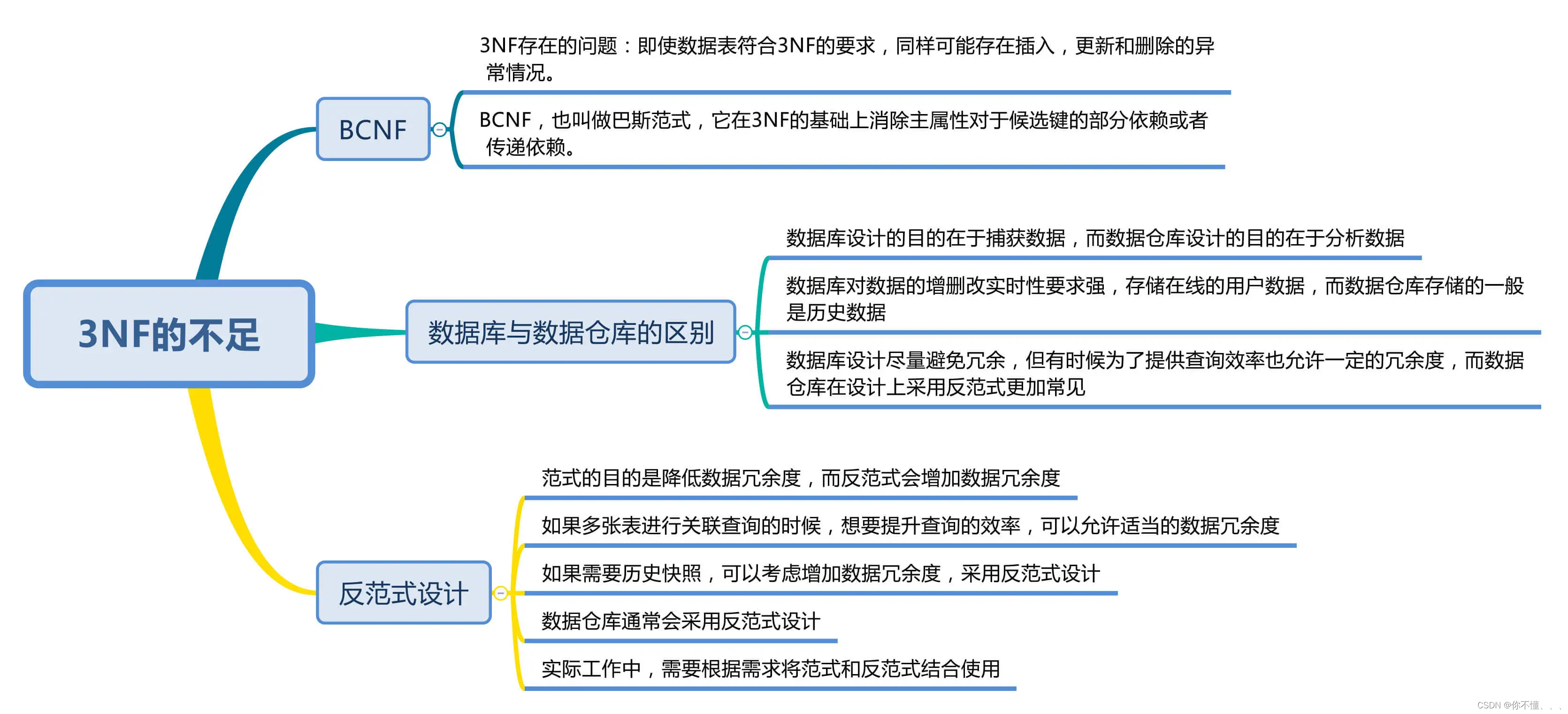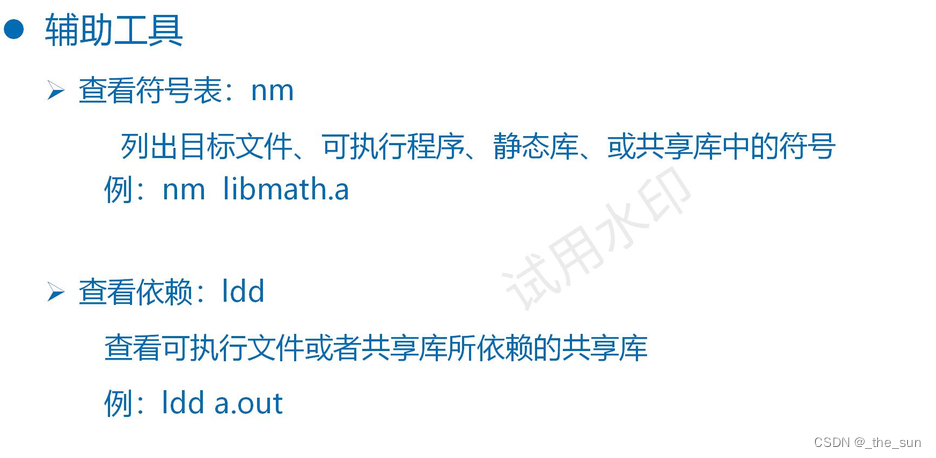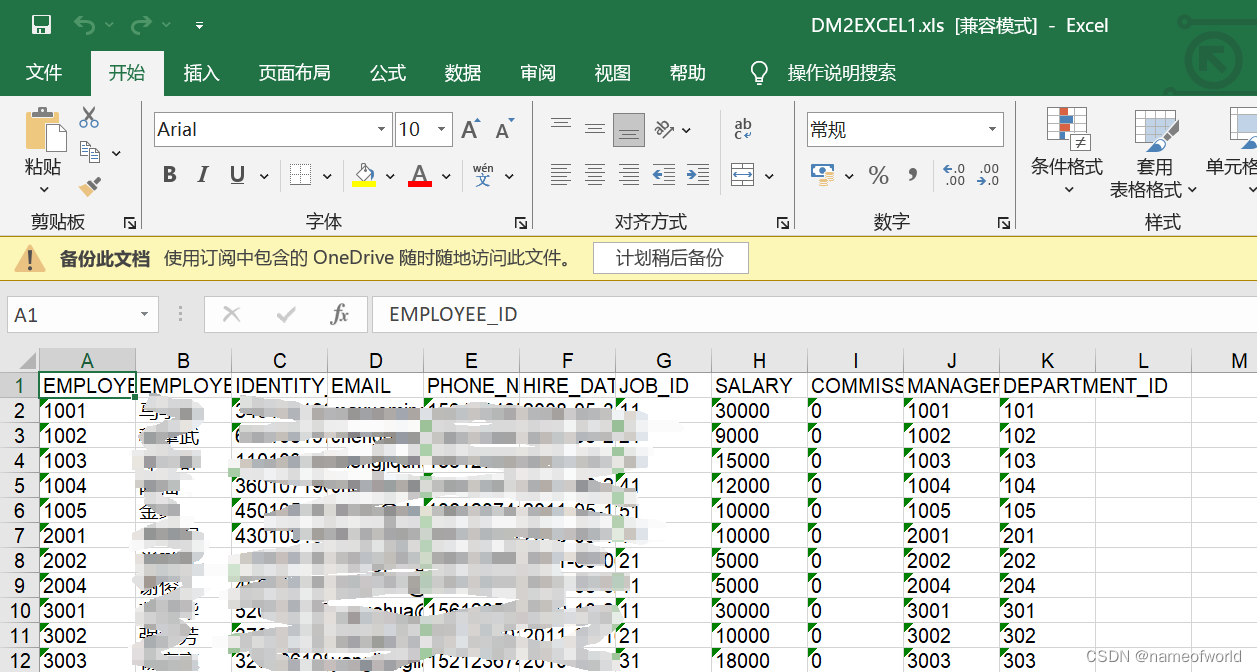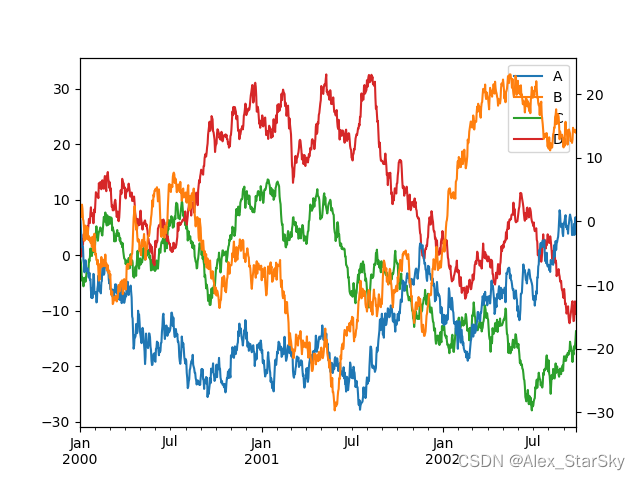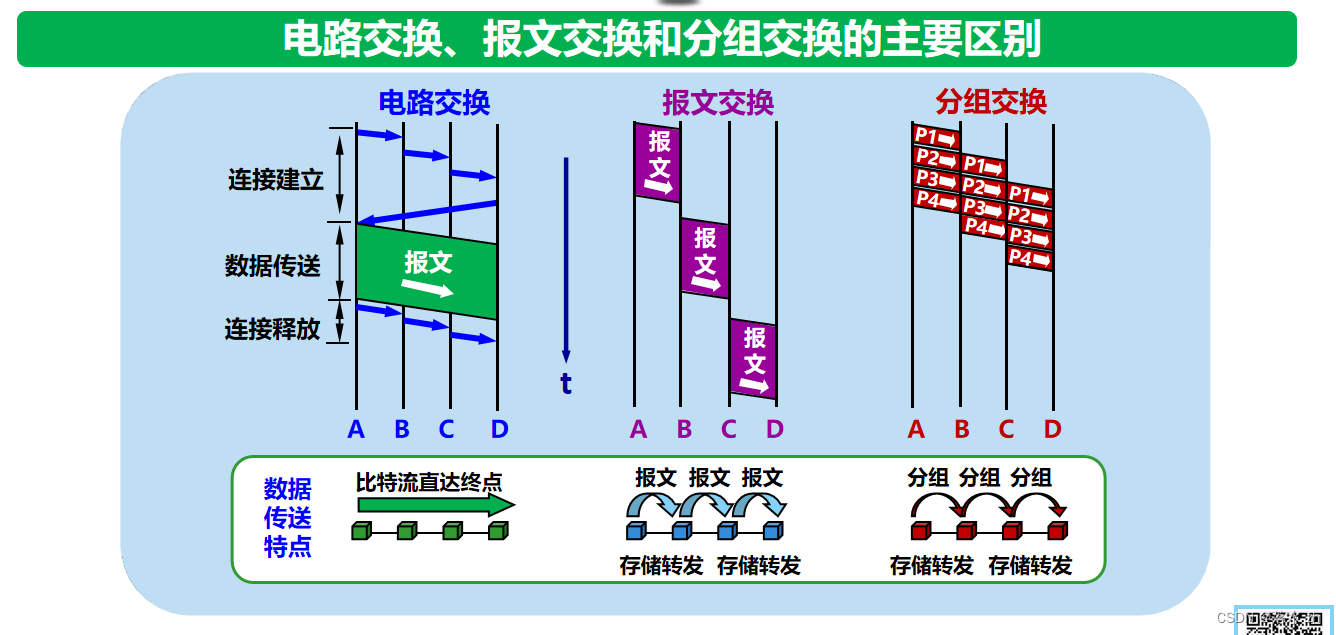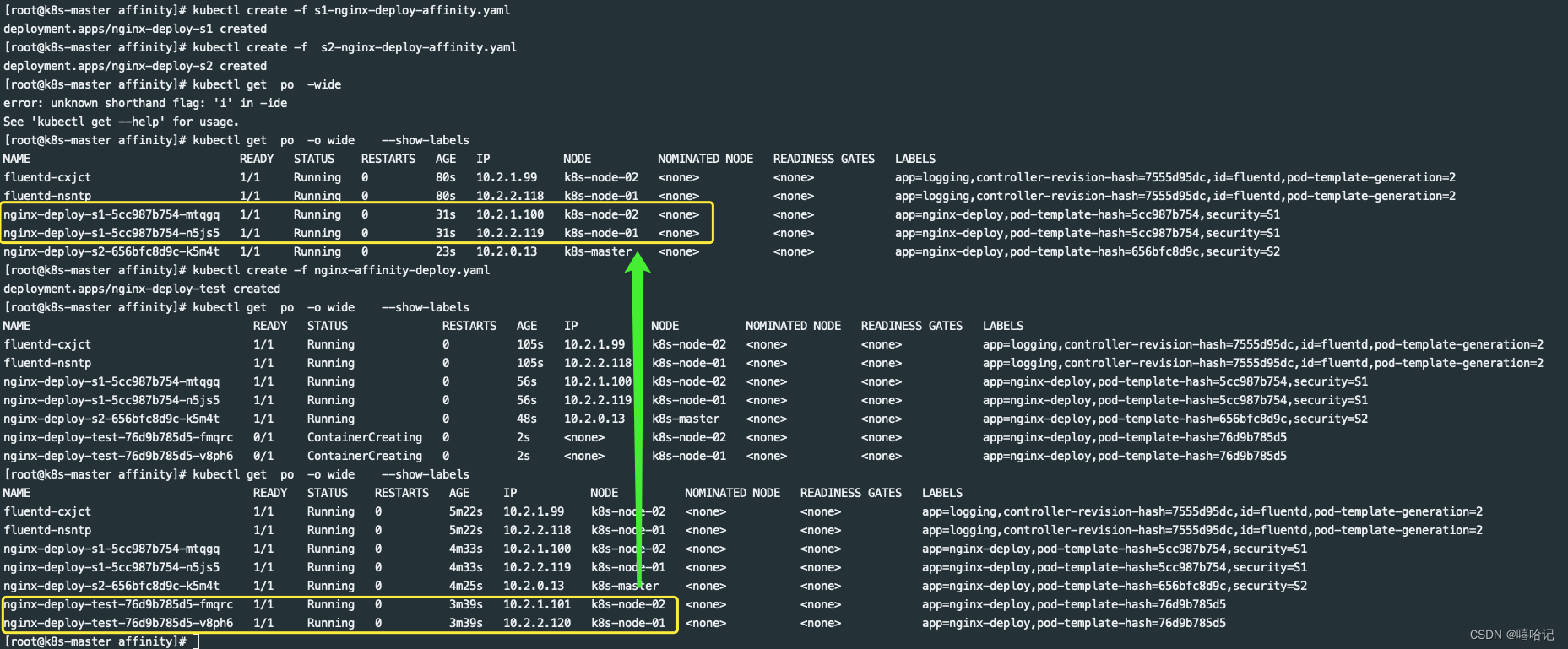目录
1. 使用数组传参
1.2 传递单个参数
1.3 传递多个名称相同的参数
1.3.1 关于urlencode
2. 使用集合传参
1. 使用数组传参
创建一个Spring MVC项目,其中 .java文件内容如下:
package com.example.demo.controller;
import com.example.demo.Person;
import org.springframework.web.bind.annotation.RequestMapping;
import org.springframework.web.bind.annotation.RequestParam;
import org.springframework.web.bind.annotation.RestController;
import java.util.Arrays;
@RequestMapping("/Para")
@RestController
public class ParaController {
@RequestMapping("/M6")
public String m6(String[] arrayPara){
return "ArrayPara has received:\n"
+ Arrays.toString(arrayPara);
}
}
注:注意返回语句的书写:如果写成 return "ArrayPara has received:\n"+ arrayPara; 返回的是一个地址,需将其转为字符串进行返回;
使用浏览器构造HTTP请求发送给目标地址:
1.2 传递单个参数

1.3 传递多个名称相同的参数

即:当客户端在同一个请求中发送了多个同名的参数,浏览器会帮我们封装为一个数组;
1.3.1 关于urlencode
对于1.3 中提到的在同一个请求中传递多个名称相同的参数的问题,
构造该请求时,除了使用&连接的键值对作为query string部分进行多参数传递的方法外,
还可以直接使用逗号连接多个参数值:
即构造参数如下:

这种方式会被成功解析是因为Chrome浏览器会进行urlencode,
关于urlencode问题,在本专栏关于servlet项目前端向后端传参时,也曾提及,文章链接如下:
【JavaEE】_前端使用GET请求的queryString向后端传参-CSDN博客![]() https://blog.csdn.net/m0_63299495/article/details/136307074不止Chrome,postman也支持urlencode操作,在postman上构造这种类型的请求也可以成功发送并成功收到响应;
https://blog.csdn.net/m0_63299495/article/details/136307074不止Chrome,postman也支持urlencode操作,在postman上构造这种类型的请求也可以成功发送并成功收到响应;
可以加上数组长度的输出语句,验证urlencode操作的执行:
.java文件内容如下:
package com.example.demo.controller;
import com.example.demo.Person;
import org.springframework.web.bind.annotation.RequestMapping;
import org.springframework.web.bind.annotation.RequestParam;
import org.springframework.web.bind.annotation.RestController;
import java.util.Arrays;
@RequestMapping("/Para")
@RestController
public class ParaController {
@RequestMapping("/M6")
public String m6(String[] arrayPara){
return "ArrayPara has received:\n"
+ Arrays.toString(arrayPara)
+ "\nThe length is: " + arrayPara.length;
}
}
运行启动类后,使用postman构造如下请求并发送 :

2. 使用集合传参
以List接口为例:
.java文件内容如下:
package com.example.demo.controller;
import com.example.demo.Person;
import org.springframework.web.bind.annotation.RequestMapping;
import org.springframework.web.bind.annotation.RequestParam;
import org.springframework.web.bind.annotation.RestController;
import java.util.Arrays;
import java.util.List;
@RequestMapping("/Para")
@RestController
public class ParaController {
@RequestMapping("/M7")
public String m7(List<String> listParam){
return "ListParam has received:\n" +listParam
+"\nThe length is: " + listParam.size();
}
}
运行启动类后,使用postman构造如下请求并发送 :
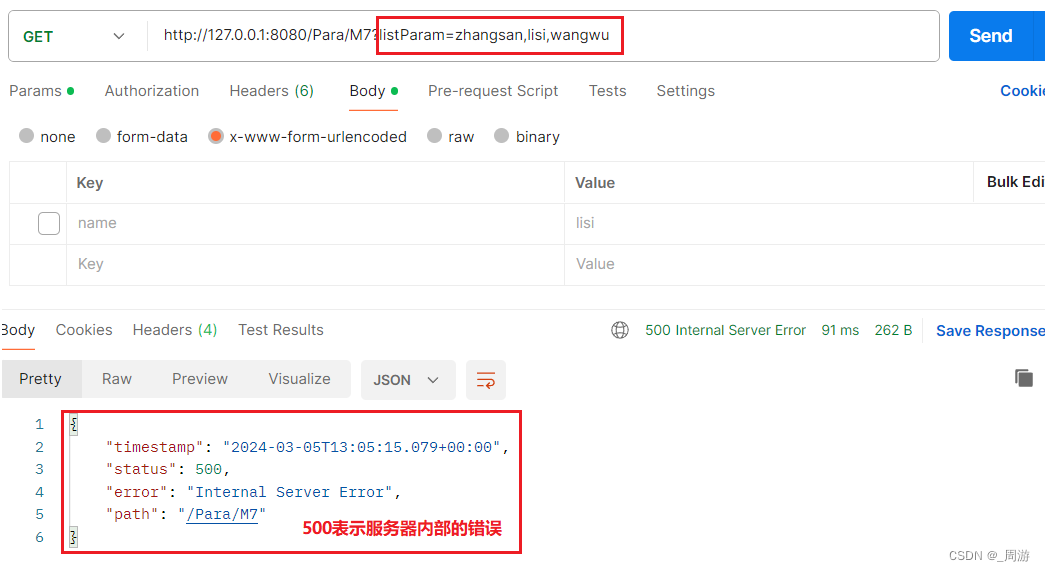
查看错误日志:

表示:默认封装方式为数组,而非List接口;
如果需要使用List接口,需要使用一个注解@RequestParam:
现修改.java文件如下:
package com.example.demo.controller;
import com.example.demo.Person;
import org.springframework.web.bind.annotation.RequestMapping;
import org.springframework.web.bind.annotation.RequestParam;
import org.springframework.web.bind.annotation.RestController;
import java.util.Arrays;
import java.util.List;
@RequestMapping("/Para")
@RestController
public class ParaController {
@RequestMapping("/M7")
public String m7(@RequestParam(required = false) List<String> listParam){
return "ListParam has received:\n" +listParam
+"\nThe length is: " + listParam.size();
}
}
再次运行启动类,使用postman构造如下请求并发送 :
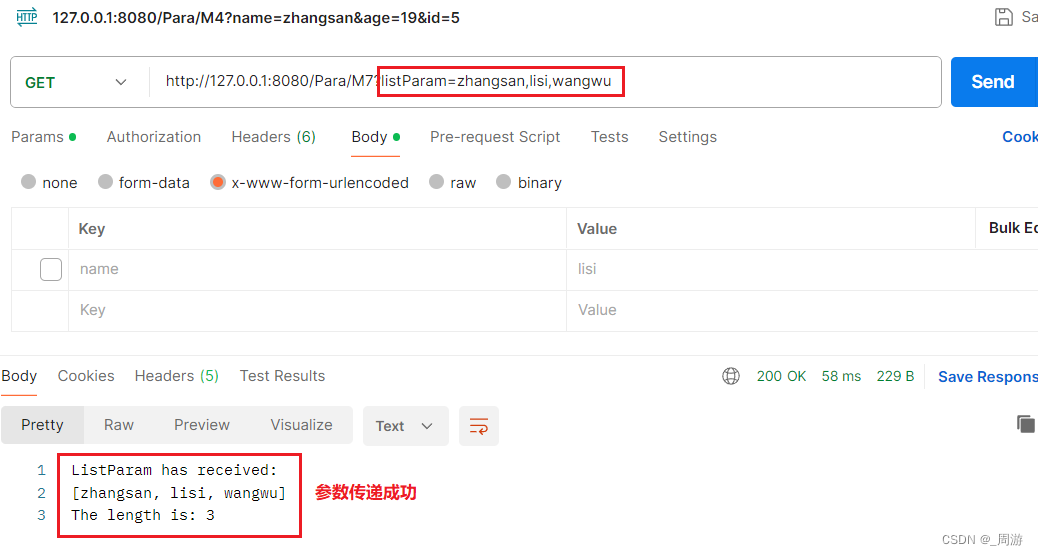
可见此时参数传递成功;
注:关于@RequestParam注解,在后端代码重命名时也曾使用过,此部分相关原文链接如下:
【JavaEE】_Spring MVC项目之使用对象传参-CSDN博客![]() https://blog.csdn.net/m0_63299495/article/details/136488702
https://blog.csdn.net/m0_63299495/article/details/136488702

